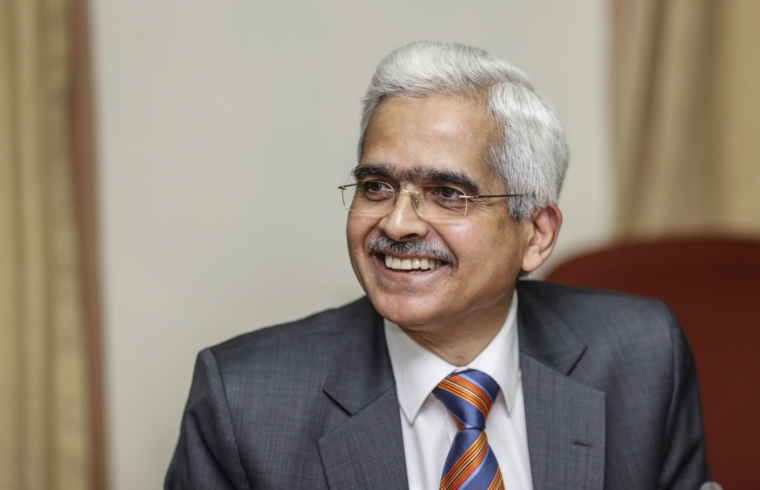India’s new central bank chief delivered an unexpected interest
rate cut, providing Prime Minister Narendra Modi with the kind of stimulus he needs to stoke economic growth in an election year.
In a sharp reversal from October, when the Reserve Bank of India took rate cuts off the table, Governor Shaktikanta Das — who took office in December — opened the door to more policy easing and brought growth firmly back onto the Monetary Policy Committee’s agenda. That was a departure from his predecessor Urjit Patel, whose singular aim was to meet the RBI’s 4 percent inflation mandate.
The surprise move came almost a week after Modi’s administration unveiled an expansionary budget, which included $13 billion of help for consumers ahead of the poll that’s due by May, and days after a top adviser to the prime minister said the RBI
should cut rates.
The U.S. Federal Reserve’s shift to a more dovish stance is giving emerging markets like India a reprieve after last year’s rate hikes. Central banks in the
Philippines and Thailand also held rates steady this week, while developed economies, like the Reserve Bank of Australia are also
shifting stance.
Das, a career bureaucrat, was appointed shortly after Patel resigned as governor amid a heated public battle with the state, which led to questions about the central bank’s independence from politics. Modi’s government has been pushing the RBI to transfer more of its excess capital to the state as well as ease lending restrictions on banks to spur growth.

Photographer: Dhiraj Singh/Bloomberg
Inflation Slowdown
Government officials were quick to praise the RBI’s move, while economists were more cautious, concerned that the monetary and fiscal stimulus would be inflationary.
“A very balanced and pragmatic policy statement,” Economic Affairs Secretary Subhash Garg said after the rate move. It “underlines low inflation and high growth path for India for 2019-20.”
Read: Time for India’s Central Bank to Lower Rates, Modi Adviser Says
Das pointed to a sharp slowdown in inflation as justification for the 25 basis-point reduction, taking the repurchase rate to 6.25 percent. The MPC also reversed its policy stance to neutral from ‘calibrated tightening’ adopted in October.
“Reading between the lines, it appears that Mr. Das has changed the RBI’s paradigm overnight, to one where growth is the focus of policy and inflation merely an input into decisions,” said Freya Beamish, chief Asia economist at Pantheon Macroeconomics Ltd.
That opens the way for more rate cuts, she said, adding “we are worried by the U-turn and what this week says about the RBI’s frail autonomy and discipline.”

Market reaction to the surprise rate cut was subdued. The yield on the most-traded 2028 sovereign bonds
fell just seven basis points, the rupee eked out a gain and the main stocks gauge closed flat on Thursday.
Read More: India Assets End With Whimper as Surprise Rate Cut Fails to Awe
Das, who was one of four MPC members who voted for a cut on Thursday, reiterated his commitment to supporting growth.
“It is vital to act decisively and in a timely manner to address the objective of growth once price stability as defined in the Act is achieved,” Das told reporters in Mumbai. “The shift in stance from calibrated tightening to neutral provides flexibility to address, and the room to address, sustained growth of India’s economy over the coming months as long as inflation remains benign.”
Also Read: India’s Central Bank Is Right to Cut, Luckily: Daniel Moss
Inflation slowed to an 18-month low of 2.2 percent in December, remaining well below the RBI’s medium-term target, and not expected to breach that goal in the next 10 months, according to the central bank’s latest forecast.
Thursday’s move was the first rate cut since August 2017. The decision was predicted by just 11 of 43 economists surveyed by Bloomberg News, with the rest expecting no change.
Since taking office Dec. 12, Das has eased banks’ asset recognition norms for medium and small scale enterprises, removed lending curbs on three weak state-run banks and has agreed to consider payment of an interim dividend to the government.
“Das has delivered what the Modi government was hoping for,” said Mark Williams, chief Asia economist at Capital Economics Ltd. in London. While this “pre-election rate cut” might boost growth, the longer-term concerns for investors will be about the RBI’s credibility as an inflation fighter, he added.
— With assistance by Michelle Jamrisko, and Manish Modi
(Updates with comment from economist.)











